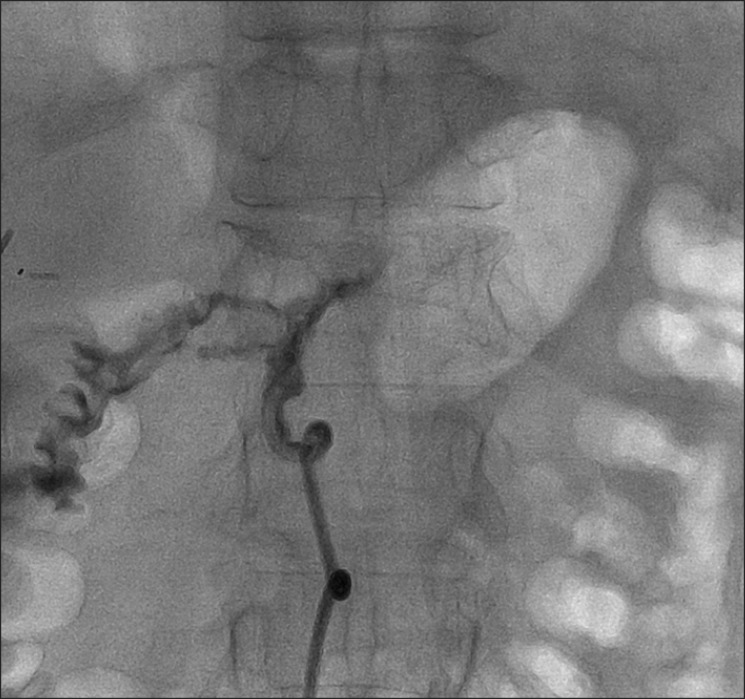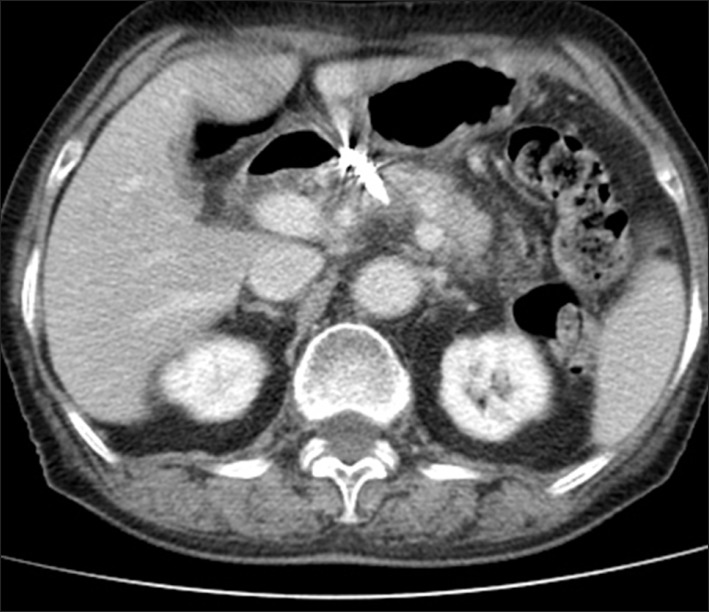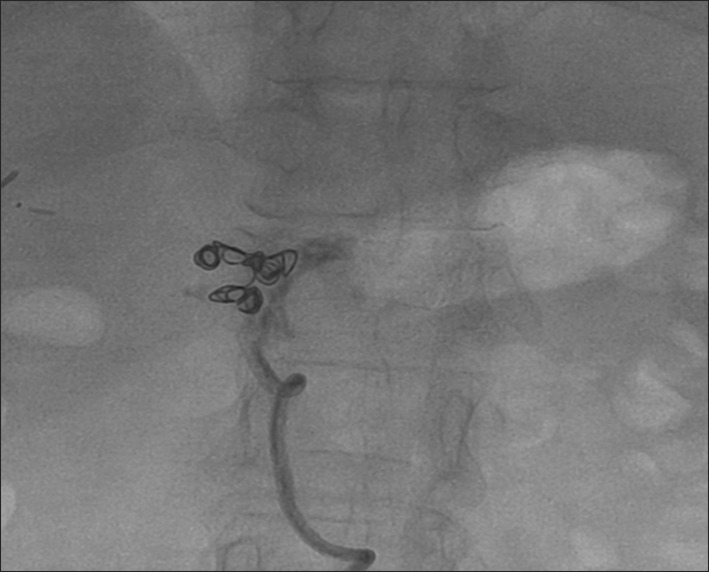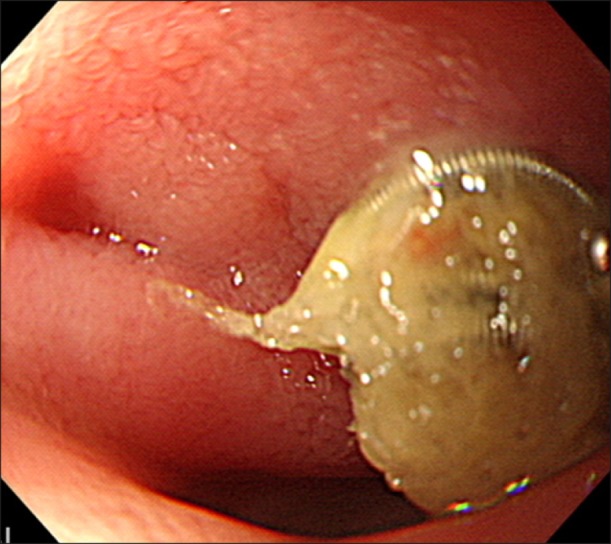Korean J Hepatobiliary Pancreat Surg.
2013 May;17(2):75-78. 10.14701/kjhbps.2013.17.2.75.
Closure of pancreatoduodenal fistula using vascular occluding coil embolization and fibrin glue injection: a case study
- Affiliations
-
- 1Department of Surgery, GangNeung Asan Hospital, University of Ulsan College of Medicine, Gangneung, Korea. goodnews@gnah.co.kr
- 2Department of Gastroenterology, GangNeung Asan Hospital, University of Ulsan College of Medicine, Gangneung, Korea.
- 3Department of Interventional Radiology, GangNeung Asan Hospital, University of Ulsan College of Medicine, Gangneung, Korea.
- KMID: 1429983
- DOI: http://doi.org/10.14701/kjhbps.2013.17.2.75
Abstract
- The conventional management of pancreatoenteric fistulas and pancreatic abscess with aggressive surgery or percutaneous drainage catheter placement are associated with increased surgery-related morbidity and mortality, and a longer hospitalization. We report here a case of successful closing pancreatoduodenal fistula, which remained open after the percutaneous catheter drainage of pancreatic abscess, by using vascular coil embolization and fibrin glue injection. This procedure is a less invasive, more effective and better tolerated strategy for the management of pancreatoenteric fistula in a selected group of high risk patients and needs further investigation.
Keyword
MeSH Terms
Figure
Reference
-
1. Tsou YK, Chu YY, Lin CH. Education and imaging. Gastrointestinal: spontaneous pancreaticoduodenal fistula associated with acute necrotizing pancreatitis. J Gastroenterol Hepatol. 2010; 25:217. PMID: 20136977.2. Wolfsen HC, Kozarek RA, Ball TJ, et al. Pancreaticoenteric fistula: no longer a surgical disease? J Clin Gastroenterol. 1992; 14:117–121. PMID: 1556424.3. Brückner M, Grimm H, Nam VC, et al. Endoscopic treatment of a pancreatic abscess originating from biliary pancreatitis. Surg Endosc. 1990; 4:227–229. PMID: 2291166.
Article4. Yağmurdur MC, Gür G, Aytekin C, et al. Atypical presentation of chronic pancreatic fistula: a case successfully managed with long-acting somatostatin. Turk J Gastroenterol. 2003; 14:200–203. PMID: 14655067.5. Jang JW, Park DH, Moon SH, et al. Endoscopic fibrin glue injection for closure of pancreatocutaneous fistula following transgastric endoscopic necrosectomy. World J Gastroenterol. 2008; 14:6093–6095. PMID: 18932292.
Article6. Tang LJ, Wang T, Cui JF, et al. Percutaneous catheter drainage in combination with choledochoscope-guided debridement in treatment of peripancreatic infection. World J Gastroenterol. 2010; 16:513–517. PMID: 20101781.
Article7. Sezer A, Sagiroglu T, Temizoz O, et al. Spontaneous fistulization of a pancreatic abscess to colon and duodenum treated with percutaneous drainage. Surg Laparosc Endosc Percutan Tech. 2011; 21:e138–e140. PMID: 21654287.
Article8. Sikora SS, Khare R, Srikanth G, et al. External pancreatic fistula as a sequel to management of acute severe necrotizing pancreatitis. Dig Surg. 2005; 22:446–451. PMID: 16479114.
Article
- Full Text Links
- Actions
-
Cited
- CITED
-
- Close
- Share
- Similar articles
-
- A Case of Bronchoscopic Treatment of a Bronchopleural Fistula Accompanied by Pneumonia
- Endobronchial Closure of Postoperative Bronchopleural Fistula Using Vascular Occluding Coils
- Treatment of a Recurrent Rectourethral Fistula by Using Transanal Rectal Flap Advancement and Fibrin Glue: A Case Report
- A Case of Successful Closure using Endoscopic Hemostatic Clips with a Detachable Snare and Fibrin Glue Injection for a Gastro-Cutaneous Fistula following Buried Bumper Syndrome
- Bronchoscopic Treatment of a Bronchopleural Fistula with using Coils and Fibrin Glue: A case report







